Topic outline
-
-
-
Elasticity
Elasticity is the ability of a deformed material body to return to its original shape and size when the forces causing the deformation are removed. An object which can do this behaves elastically. The force possessed by an elastic object when it is stretched or compressed is known as elastic force. Objects which do not return to their original size when stretched are called inelastic.
Examples of elasticity
When a rubber band is stretched, a force is felt that feels like the band is resisting a change or deformation to its shape. This force is called the elastic force and the force is lost as soon as the external force is removed.

Figure 1: An elastic band will change shape when it is pulled apart. Once it is no longer being pulled apart, it will return to its normal shape.
Springs are one of the best examples of elastic force because they return to their original shape after undergoing deformations such as compression and expansion.

Figure 2: A spring when stretched will compress and return to its normal shape.
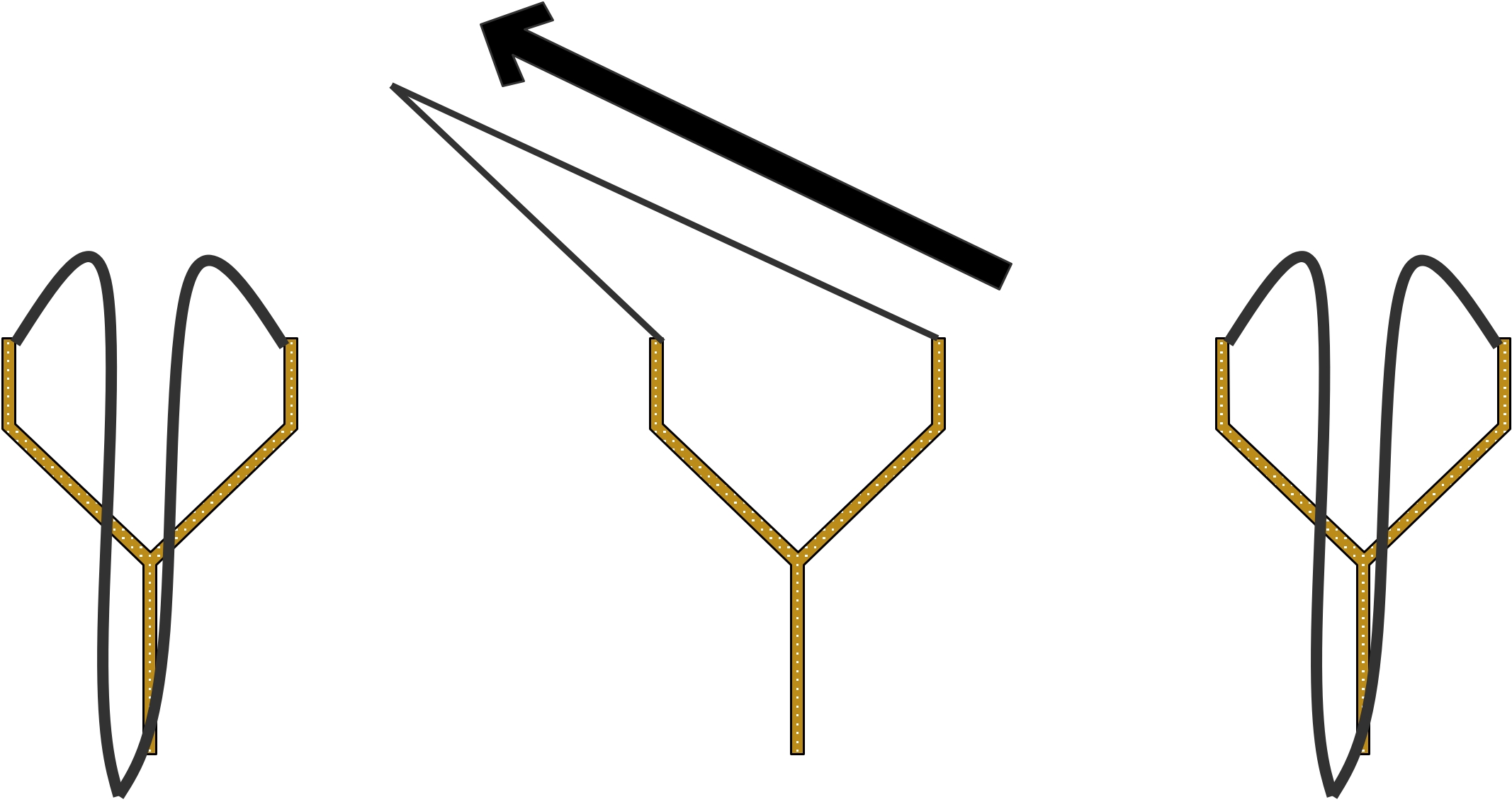
Figure 3: When you pull on the rubber sling of a catapult, the rubber stretches. When you release the rubber, the rubber will compress back to its normal size.
A bow and arrow would not work without elastic force. The archer pulls the string attached to the ends of the bow towards his/her side. The string being elastic resists the change in shape and gets back to its original place as soon as the archer releases it. This helps the arrow to move forward and hit the aim.
Bungee jumping is one of the most popular adventure sports. When a bungee jumper reaches the end of the bungee cord, he does not stop immediately because the bungee cord is elastic. The elastic force in the bungee cord helps the jumper to bounce back and to slow down the fall to avoid any injury.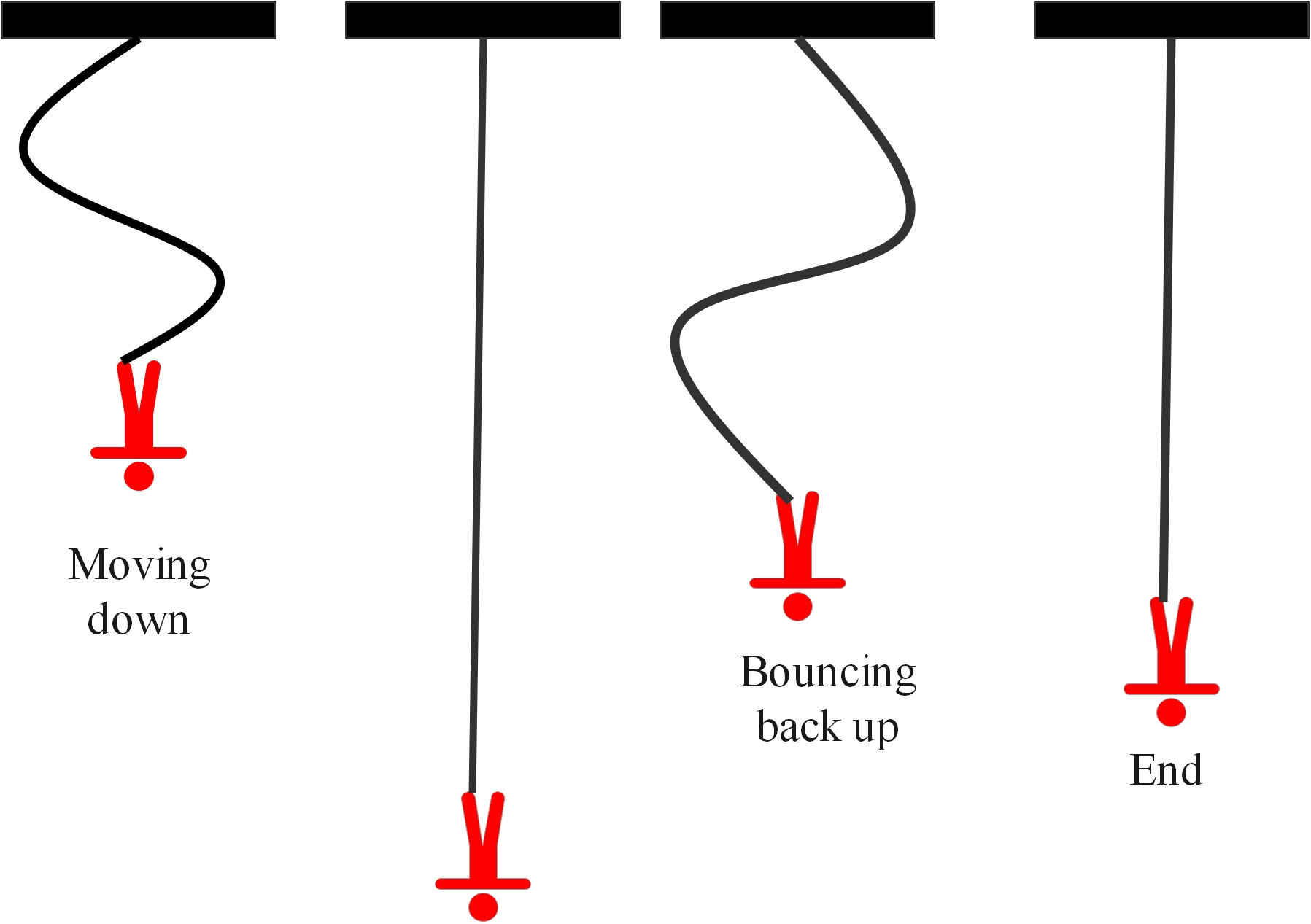
Figure 4: The bungee cord is made of elastic which allows the jumper's fall to be safely slowed down.
Objects have an elastic limit. This is when an elastic object is stretched beyond its ability to return to its original length when the force is removed. This can cause the object to either maintain its new length or break.
Figure 5: The elastic limit can cause the object to be permanently deformed or even break the object.
-
-
-
Activity 1
What you will need:
Spring
Ruler
Mass hanger
Slotted weights
Retort stand
A pointer
What you will do:
1. Set up your apparatus as shown in the diagram below.
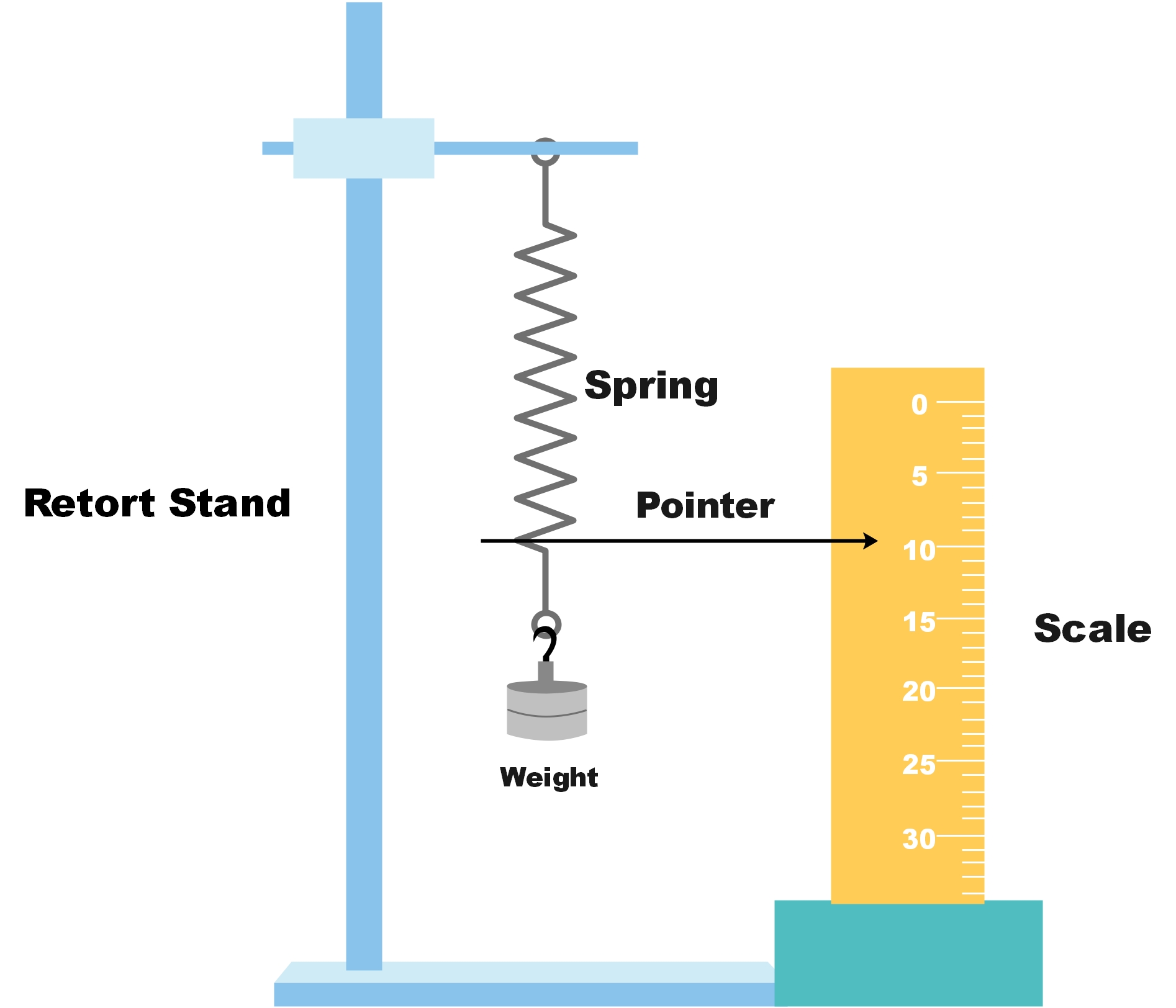
2. Copy the following table into your notebook.

3. Measure the length of the spring with no mass added. Note the length in the table.
4. Add 1 slotted weight to the spring and measure the length of the spring. Record the new length in the table.
5. Add another slotted weight. Measure and record the length of the spring.
6. Repeat step 5 until you have added 5 slotted weights.
7. Complete the table by calculating the extension of the spring. Remember to subtract the original length of the spring from each of your length measurements, so that you are recording the extension of the spring, and not its total length.
Plot this data on a graph, using the mass of the slotted weights on the x axis and the length of the spring on the y axis.
Expected results:

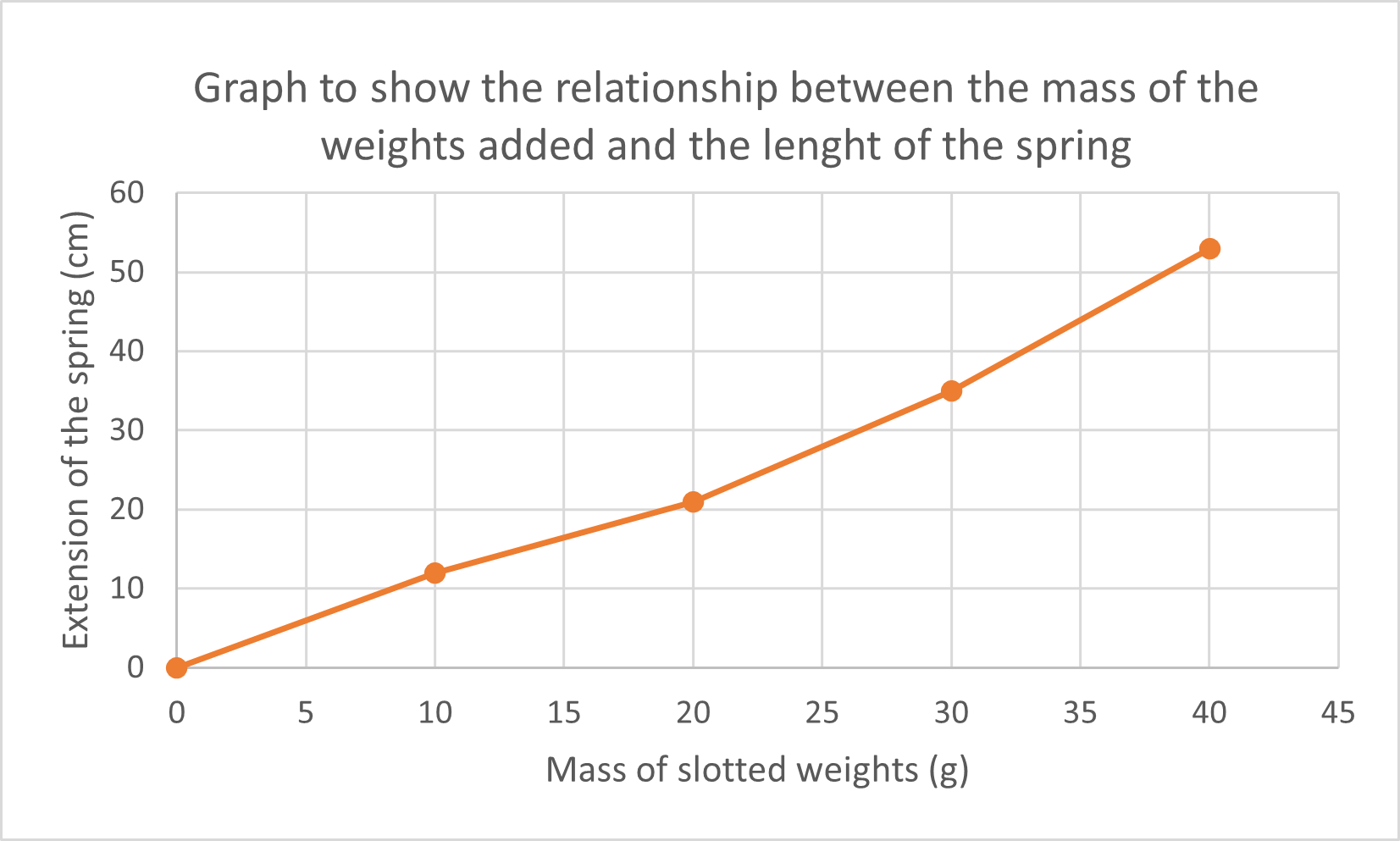
What do you notice about the relationship between the mass added and the length of the spring?
Conclusion:
As slotted weights were added to the spring, the length of the spring increased. This is because the mass caused extension in the spring. The relationship between the mass added and the length of the spring is directly proportional. This means that for every weight added, the extension of the spring will be the same.
Extension happens when an object increases in length, and compression happens when it decreases in length.
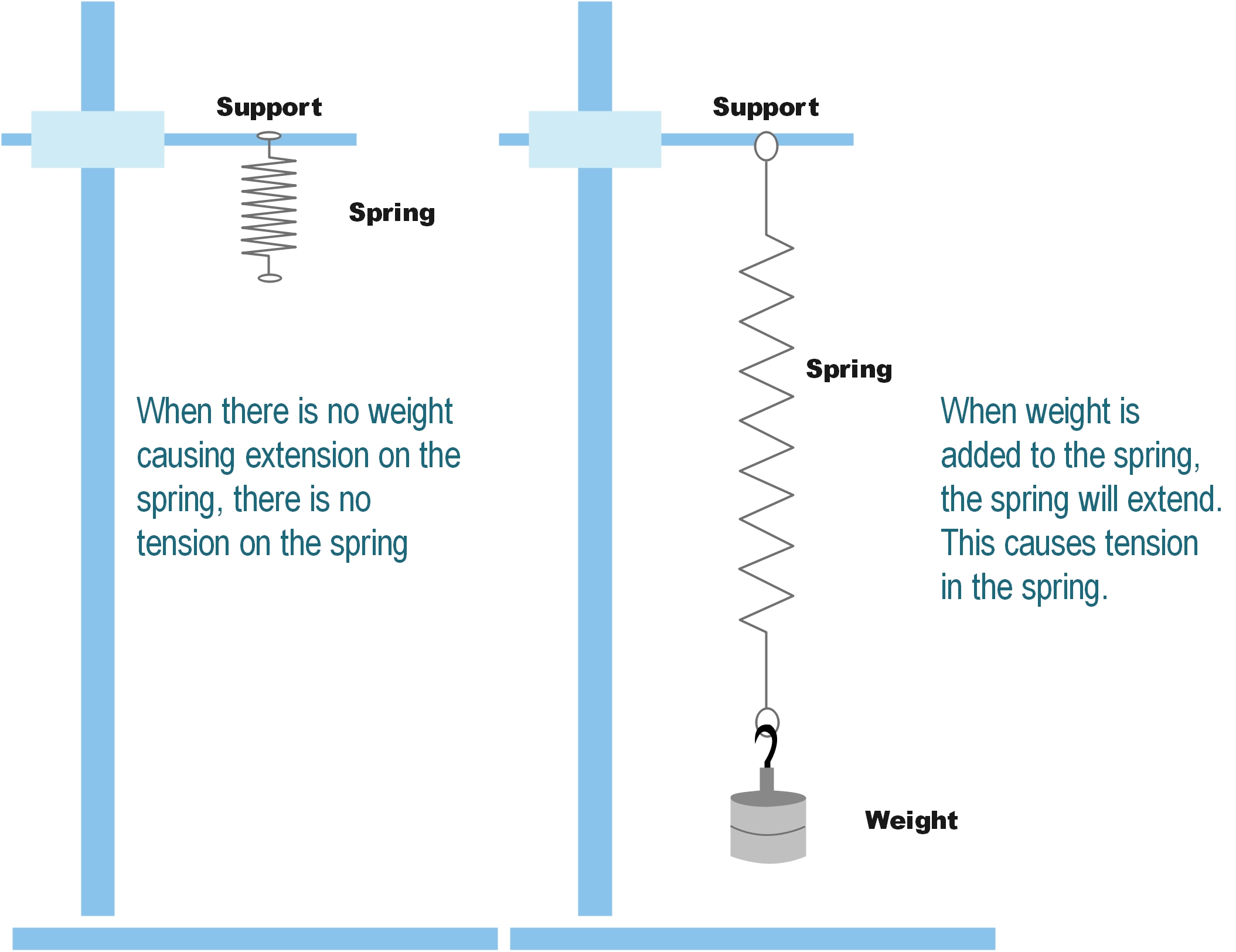
Tension is a type of pulling force and the force transmitted in the spring when it is stretched. As mass is added to the spring, and therefore putting the spring under tension, the length of the spring is extended.
-
Activity 2
What you will do:
1. Visit : Phet Lab Hookes Law
2. Press on the stretch tab.
3. Click on the boxes on the right-hand side to show unstretched length, resting position and movable lines.
4. Place the ruler in line with the unstretched line.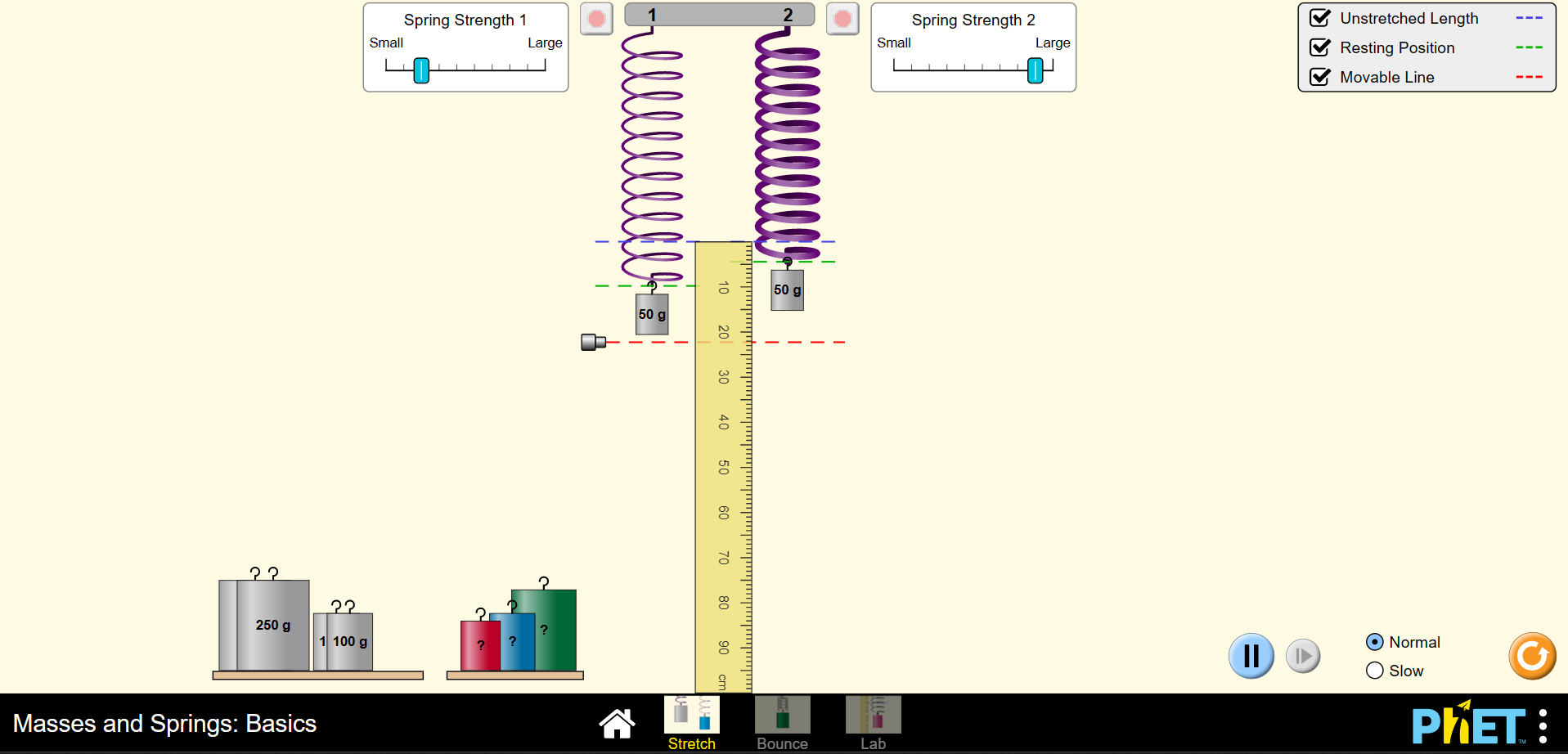
5. Adjust the spring strength to small on the left hand-side and strong on the right-hand side. Place the100g weight on each spring. Change the weights to 250g.
What do you notice about the length of the springs?
6. Adjust the sizes of both springs to make them the same strength. Place a 50g weight on the spring on the left, and a 100g weight on the spring on the right.
What do you notice about the length of the springs?
When the strenght of the spring is changed, the smaller strengthened spring will have a larger extension because of there is increased tension because of the size of the spring and the mass of the weight. The stronger spring will have a smaller extension because there is less tension on the spring.
When the strenght of the spring is the same, the spring with the larger mass will have a greater extension because of the increased tension.
-